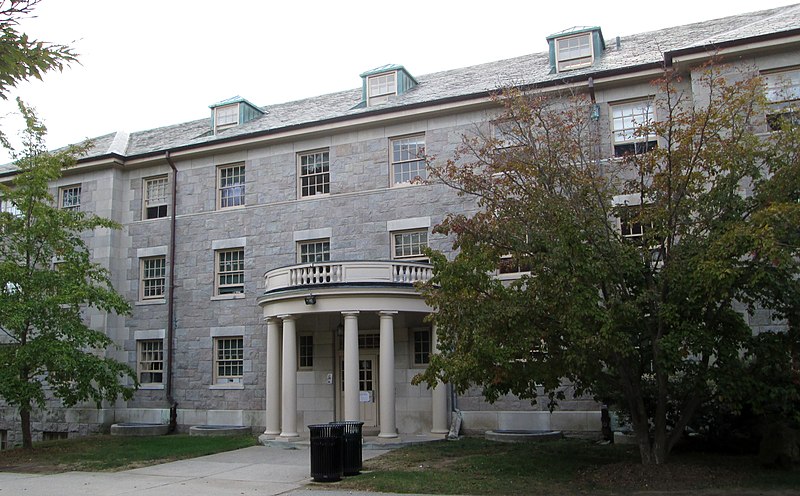 Salem on the Thames: Moral Panic, Anti-Zionism, and the Triumph of Hate Speech at Connecticut College. Richard Landes. Published by Academic Studies Press, 2020. 32.95 pp.218
Salem on the Thames: Moral Panic, Anti-Zionism, and the Triumph of Hate Speech at Connecticut College. Richard Landes. Published by Academic Studies Press, 2020. 32.95 pp.218
At Connecticut College, in the Spring of 2015, Andrew Pessin, a professor of philosophy was grossly mistreated. He was grossly mistreated by student and faculty activists, by faculty members who went along with the activists, and by Connecticut College’s administration, who encouraged and rewarded Pessin’s tormentors. By the 2015-16 academic year, when protests swept across campuses and received obsessive media coverage, Andrew Pessin had already taken medical leave. He had been driven out in part as a result of stresses caused by the tarnishing of his good name, by multiple betrayals on the part of a community of which he had long been a valued member, and by death threats. He would not return until Fall 2017.
Although this incident received some coverage, most prominently from David Bernstein for the Washington-Post-hosted Volokh Conspiracy blog, it has not received the attention it merits. Salem on the Thames, edited by Richard Landes, remedies that deficiency. Landes, a historian by trade, does not pretend to be an investigative reporter. He adopts “the perspective of the victim,” Andrew Pessin, who, to this day—Landes plausibly assumes that there is a non-disclosure agreement—has not been properly heard. But if Landes and the other contributors to this volume make no bones about whose side they are on, their account is supported by extensive documentation—emails, public statements, newspaper articles—that readers can examine for themselves here. In addition to providing a detailed account of events, Landes and his co-contributors consider the Pessin affair as a “microcosm of events in the current global academic community,” reflection on which “offers important lessons to that community.” Landes’s fellow contributors include Ashley Thorne of the National Association of Scholars, John Gordon, Professor Emeritus of English at Connecticut College, and Fred Baumann, Professor of Political Science at Kenyon College. Asaf Romirowsky, of Scholars for Peace in the Middle East, provides the Introduction.
Let’s begin with the account of events, which is the most shocking and effective part of the book. To understand what happened at Connecticut College, one starts with the August 11, 2014 Facebook post, by Andrew Pessin, that set things in motion. Here it is:
“I’m sure someone could make a cartoon of this, but one image which essentializes the current situation in Gaza might be this. You’ve got a rabid pit bull chained in a cage, regularly making mass efforts to escape. The owner, naturally keeps the thing in the cage, but being kind-hearted or something, regularly feeds it, waters it, takes care of its health needs, etc. But liberal hearted world is outraged at the cruelty of keeping in in the cage, keeps pressuring the owner to let it out. Every so often the man relents under pressure, opens the cage a crack, and the pit bull comes roaring bounding out, snarling, going for the throat. A short battle ensues, the pit bull gets put back in… and almost immediately liberal world pressure starts complaining about the cruelty to animals and insisting he open the cage.
Gaza is the cage because of its repeated efforts to destroy Israel and the Jews. (1990s suicide buses anyone? how quickly we forget.) The blockade is not the cause of the current conflict. It is the RESULT of the conflict and cannot retroactively become its cause. The same is true of Judea and Samaria, the result of the Arab enmity toward Israel and not its cause. Anyone who fails to recognize that clear and obvious fact is demanding the release of a rabid pit bull. You may call for this release because you are yourself a rabid pit bull protesting your co-specimen’s detention, or because you are a well-meaning liberal hearted animal rights person. But you are demanding the same thing. (And I wonder how heartily you’d demand this if the rabid pit bull was to be released in YOUR neighborhood.”
Comments on the post are also relevant, so here they are, with some identities protected.
“Nicole ***: Wasn’t too keen on your metaphor as I think a dog like that should be put down. But I understand your point and it’s all true. They can’t be trusted and that why there’s blockades. Terrorists should be put down as well, just like the dog. August 11, 2014 at 3:38am
Andrew Pessin: I agree nicole – but a lot of people out of (misplaced) kindness to the dog wouldn’t put it down… August 11, 2014 at 6:22am
***** I like the metaphor. Perhaps to address Nicole’s point, we can think of Gaza as a group of dogs in one cage. with most of them ***** possibly being healthy/nonviolent. Killing ALL of the dogs seems wrong, since there might be a healthy one in the bunch. August 11, 20114 at 9:08 am
Nicole ***: I said terrorists. I meant Hamas and not all Palestinians. August 11, 2014 at 9:08am
***** Right, I know you weren’t suggesting killing innocent Palestinians. My point is just that it’s difficult to target terrorists when they are living among the innocent.”
The contributors disagree about whether Pessin’s post was, as I think, careless in allowing the interpretation that Palestinians in the West Bank and Gaza were properly analogized to a rabid pit bull. But all agree, because it is beyond dispute, on two matters. First, this post was one of several Pessin made in July and August of 2014, during Operation Protective Edge. Nearly every post Pessin made during this period, Landes explains, “explicitly addressed Hamas and its activities during the war.” Anyone who took even a moment to review the post in context, who was not blinded by prejudice, would conclude that it was Hamas in the metaphor. Second, the comments section proves that “terrorists,” not Palestinians altogether, are the subject of Pessin’s denunciation. There is no way around this. Yet here, by group, is how Connecticut College eventually responded.
The Students
It was only in February of 2015 that a student, who had reportedly founded, in high school, a chapter of Students for Justice in Palestine, discovered the Facebook post. She had already tangled with Pessin over comments he’d made at a forum on the Charlie Hebdo killings, comments one of Pessin’s later ardent detractors considered “mainstream,” if lamentable. We don’t have the student’s letter to Pessin but can conclude from Pessin’s response and her subsequent actions that she considered the post “racist” and “hateful.” A week and a half later, and after Pessin had taken the post down, the College’s Student Voice published—beginning on its front page–three letters objecting to it. One not only characterized Pessin’s words against Hamas as “disgusting hate speech” but also falsely accused its author of calling “for the systematic abuse, killing, and hate of another people.” The failure on the part of the opinion editor to invite Pessin to comment or to correct the obvious mischaracterization of Pessin’s post as a call for genocide may be explained by her interest in the case: she had been among those to file a “bias incident” report on Pessin, based on the post. As for the chief editor, she would soon sponsor an online petition against Pessin. Late in March, the Student Government Association would rush through two resolutions, neither mentioning Pessin by name but both, according to the SGA’s Facebook page, meant to respond to the outcry over the “dehumanizing post.”
The Faculty
That the faculty adviser for the newspaper apparently did little or nothing about breaches of journalistic ethics under his watch is among the least of the problems with the faculty’s role in Pessin’s mistreatment. Anyone who follows the activities of the scholar-activists engaged in the Boycott, Divestment, and Sanctions (BDS) movement against Israel, will not be surprised that Pessin’s colleague Sufia Uddin, a member of Religious Studies Scholars for BDS, had been circulating the Facebook post on and off campus well before the Voice letters came out. She did not share Pessin’s name at the time. But quite apart from the fact that many on campus could guess whom she was talking about, there is the unnamed faculty member Landes quotes to the effect that Uddin confided at the time that she planned a “public shaming” campaign against Pessin. All of the Voice letter-writers were, according to Landes, affiliated with the Global Islamic Studies program Uddin headed.
What is surprising, even stunning, is that, in response to the controversy—and student pressure—academic department after academic department lined up to issue statements, some specifically mentioning the Facebook post, the others meaning to show themselves on the right side of the matter. Even the members of Pessin’s own philosophy department, while sweetening their letter by declaring their eagerness to welcome Pessin back into the fold, felt they had to denounce Pessin’s post as dehumanizing. These people, friends and colleagues of Pessin’s, knowing him to be dealing with the consequences of an explosion that drove him out of his home, knowing his wife to be seriously ill, nonetheless piled on, perhaps congratulating themselves on the balance they displayed in taking note of Pessin’s academic freedom.
With all due weight to the difficulty of judging these matters from the outside—a difficulty mitigated by John Gordon’s insider account—this betrayal emerges as the most contemptible element of a shameful episode. But the overall effect of these statements is deeply disturbing. In many years now of trying to take stock of the weakening of the norms that should guide our campus intellectual communities, I have never seen anything like this. The members of seemingly almost every department, center, or program on campus lined up to denounce, ritually, mostly in very similar language, a colleague, on the basis of a careless—and given the time they’d had to be more careful—perverse misreading of his words.
There were a handful of faculty dissenters, but one has the impression, adding to the disgrace, that students, on average, showed more courage than faculty. In Gordon’s judgment most faculty “signed their petitions because everyone else was doing it, too, and because there was an indistinct but definite apprehension that not signing would, as the saying goes, have consequences.” One of Gordon’s colleagues, reflecting on the aftermath, writes that “no one even brings it up. . . . [S]ome of the faculty regret their conduct, while others no longer think about it.” As for Gordon, he has never, in his long adult life, “been so close to anything so smelly.”
The Administration
The administration’s response was nearly as appalling. Pessin was urged not to defend himself. The adults would handle it. Yet the chief adult, at a hastily-called Open Forum, praised the “valor” and “intellectual acuity” of the students who had, at best, egregiously mischaracterized Pessin’s comments. She vowed to find “a new dean of institutional equity and inclusion.” But all her talk of “inclusive excellence” did nothing to soothe Pessin’s detractors who, Landes reports, shouted “F*ck you, Bergeron,” which added a comic element to her declaration of solidarity with them at the meeting’s conclusion.
Five days later, racist bathroom graffiti caused Bergeron to call an additional all-campus meeting, this time canceling classes for an entire day to insure attendance and reflection. In a letter announcing these measures, Bergeron refers to the “original Facebook post,” connects it to subsequent “incendiary language,” then takes note of the graffiti and declares, “we must take action immediately to expose and eradicate this ignorance and hatred.” Bergeron’s subsequent comments did nothing to dispel the impression that she considered Pessin’s post about Hamas and the scrawling of the n-word in a bathroom to be of a piece. As it happened, the perpetrator of the latter act wasn’t part of the campus community.
There is more, much more, but perhaps it suffices to say that the student who set all this in motion received a Scholar Activist Award.
Having established an irrefutable case against Connecticut College, the book commits some unforced errors in explaining and drawing lessons from what happened. But let me hasten to say, before I get into those, that much of what the contributors say on the subject is persuasive. Landes interprets the events as part of a broader “cog war,” uniting some progressives and some Islamists against Israel and the West. It’s true that at least some pro-BDS progressives are open, as Sunaina Maira is in her book, Boycott, about their engagement in a “war of position,” an attempt to establish a “counter-hegemony,” which alone can bring down Israel and the West. Contrary to BDS’s position on nonviolence, such a propaganda war can work alongside a “war of maneuver”—what we usually think of as war. Certainly some BDSers have dropped the nonviolence mask and cheered violence, while groups that practice violence have cheered BDS. Gordon and other authors emphasize changes in the left, going back almost fifty years, that incline progressives to suppress disfavored speech and to despise Zionists like Pessin. Gordon also emphasizes sheer cowardice, which he doesn’t attempt to explain but which certainly plays a role here. We are dealing with a “matter of character, to which ideology is secondary.” That’s plausible, as is Fred Baumann’s suggestion—in his thought-provoking attempt to explain why Connecticut College’s Hillel and Pessin’s Jewish colleagues failed Pessin—that some American Jews “see openly Zionist Jews” as “troublemakers” who threaten their standing in the community.
Yet it is an unforced error for Thorne, in a move characteristic of her essay, to go after the class president at the University of Missouri, who spread a false rumor about the KKK on campus, without mentioning that he corrected his error as soon as it was made clear. Thorne also chooses not to mention the true threat to shoot black people at the University of Missouri, which was circulating on social media at the time, for which a student at another university was arrested and convicted. Such omissions are convenient for one who wishes to fold what happened at Connecticut College into the category of “staged emergencies.” But a book that finds ill intent behind many misrepresentations should me more careful to avoid them.
And it is an unforced error for Gordon to spend pages on comments on one of the Voice articles, suggesting it was written by a Connecticut College student, seemingly without noticing that people from outside the Connecticut College community can comment on Voice articles, as one contributor to this volume did. Unless the commenter has disguised his identity in a sophisticated way, the genuinely offending remarks—complete with a reference to moneychangers—were penned by a California activist and schoolteacher, in his sixties, residing in California. In fact, the comments sound nothing like an undergraduate’s. A book that rightly decries sloppiness in serious matters, ought to be more careful about charging a community with crass anti-Semitism on the basis of a comment written by someone outside of that community.
And it is an unforced error for Landes, in making an innocuous claim about attempts to brand legitimate criticisms as hate speech, to link to an article at the Gates of Vienna site, which publishes hateful things. The article Landes links to is not in that genre, but a book that rightly objects to smelly behavior ought not to lead its readers to the brink of a cesspool.
There is a missed opportunity here, for the Pessin case, well-documented here, is so over-the-top awful that it could be exhibit A for those seeking to persuade persuadable members of what Landes calls the “global academic community” that something is badly amiss. Although the case is worse than most I know of, I suspect many middle-of-the-road faculty members, with no stake in the BDS controversy, can imagine such a thing happening on their campus or in their departments. By reflecting on the Pessin case, such faculty members might discover that they do, after all, have a stake.
This book is unlikely to convince such faculty members. But it does constitute not only an airtight prosecution’s case against one small college but a useful guide to those seeking to understand what even a tenured, well-regarded, professor can find himself up against in academia, if he opens his mouth for Israel.
Salem on the Thames: Moral Panic, Anti-Zionism, and the Triumph of Hate Speech at Connecticut College. Richard Landes. Published by Academic Studies Press, 2020. 32.95 pp.218
At Connecticut College, in the Spring of 2015, Andrew Pessin, a professor of philosophy was grossly mistreated. He was grossly mistreated by student and faculty activists, by faculty members who went along with the activists, and by Connecticut College’s administration, who encouraged and rewarded Pessin’s tormentors. By the 2015-16 academic year, when protests swept across campuses and received obsessive media coverage, Andrew Pessin had already taken medical leave. He had been driven out in part as a result of stresses caused by the tarnishing of his good name, by multiple betrayals on the part of a community of which he had long been a valued member, and by death threats. He would not return until Fall 2017.
Although this incident received some coverage, most prominently from David Bernstein for the Washington-Post-hosted Volokh Conspiracy blog, it has not received the attention it merits. Salem on the Thames, edited by Richard Landes, remedies that deficiency. Landes, a historian by trade, does not pretend to be an investigative reporter. He adopts “the perspective of the victim,” Andrew Pessin, who, to this day—Landes plausibly assumes that there is a non-disclosure agreement—has not been properly heard. But if Landes and the other contributors to this volume make no bones about whose side they are on, their account is supported by extensive documentation—emails, public statements, newspaper articles—that readers can examine for themselves here. In addition to providing a detailed account of events, Landes and his co-contributors consider the Pessin affair as a “microcosm of events in the current global academic community,” reflection on which “offers important lessons to that community.” Landes’s fellow contributors include Ashley Thorne of the National Association of Scholars, John Gordon, Professor Emeritus of English at Connecticut College, and Fred Baumann, Professor of Political Science at Kenyon College. Asaf Romirowsky, of Scholars for Peace in the Middle East, provides the Introduction.
Let’s begin with the account of events, which is the most shocking and effective part of the book. To understand what happened at Connecticut College, one starts with the August 11, 2014 Facebook post, by Andrew Pessin, that set things in motion. Here it is:
“I’m sure someone could make a cartoon of this, but one image which essentializes the current situation in Gaza might be this. You’ve got a rabid pit bull chained in a cage, regularly making mass efforts to escape. The owner, naturally keeps the thing in the cage, but being kind-hearted or something, regularly feeds it, waters it, takes care of its health needs, etc. But liberal hearted world is outraged at the cruelty of keeping in in the cage, keeps pressuring the owner to let it out. Every so often the man relents under pressure, opens the cage a crack, and the pit bull comes roaring bounding out, snarling, going for the throat. A short battle ensues, the pit bull gets put back in… and almost immediately liberal world pressure starts complaining about the cruelty to animals and insisting he open the cage.
Gaza is the cage because of its repeated efforts to destroy Israel and the Jews. (1990s suicide buses anyone? how quickly we forget.) The blockade is not the cause of the current conflict. It is the RESULT of the conflict and cannot retroactively become its cause. The same is true of Judea and Samaria, the result of the Arab enmity toward Israel and not its cause. Anyone who fails to recognize that clear and obvious fact is demanding the release of a rabid pit bull. You may call for this release because you are yourself a rabid pit bull protesting your co-specimen’s detention, or because you are a well-meaning liberal hearted animal rights person. But you are demanding the same thing. (And I wonder how heartily you’d demand this if the rabid pit bull was to be released in YOUR neighborhood.”
Comments on the post are also relevant, so here they are, with some identities protected.
“Nicole ***: Wasn’t too keen on your metaphor as I think a dog like that should be put down. But I understand your point and it’s all true. They can’t be trusted and that why there’s blockades. Terrorists should be put down as well, just like the dog. August 11, 2014 at 3:38am
Andrew Pessin: I agree nicole – but a lot of people out of (misplaced) kindness to the dog wouldn’t put it down… August 11, 2014 at 6:22am
***** I like the metaphor. Perhaps to address Nicole’s point, we can think of Gaza as a group of dogs in one cage. with most of them ***** possibly being healthy/nonviolent. Killing ALL of the dogs seems wrong, since there might be a healthy one in the bunch. August 11, 20114 at 9:08 am
Nicole ***: I said terrorists. I meant Hamas and not all Palestinians. August 11, 2014 at 9:08am
***** Right, I know you weren’t suggesting killing innocent Palestinians. My point is just that it’s difficult to target terrorists when they are living among the innocent.”
The contributors disagree about whether Pessin’s post was, as I think, careless in allowing the interpretation that Palestinians in the West Bank and Gaza were properly analogized to a rabid pit bull. But all agree, because it is beyond dispute, on two matters. First, this post was one of several Pessin made in July and August of 2014, during Operation Protective Edge. Nearly every post Pessin made during this period, Landes explains, “explicitly addressed Hamas and its activities during the war.” Anyone who took even a moment to review the post in context, who was not blinded by prejudice, would conclude that it was Hamas in the metaphor. Second, the comments section proves that “terrorists,” not Palestinians altogether, are the subject of Pessin’s denunciation. There is no way around this. Yet here, by group, is how Connecticut College eventually responded.
The Students
It was only in February of 2015 that a student, who had reportedly founded, in high school, a chapter of Students for Justice in Palestine, discovered the Facebook post. She had already tangled with Pessin over comments he’d made at a forum on the Charlie Hebdo killings, comments one of Pessin’s later ardent detractors considered “mainstream,” if lamentable. We don’t have the student’s letter to Pessin but can conclude from Pessin’s response and her subsequent actions that she considered the post “racist” and “hateful.” A week and a half later, and after Pessin had taken the post down, the College’s Student Voice published—beginning on its front page–three letters objecting to it. One not only characterized Pessin’s words against Hamas as “disgusting hate speech” but also falsely accused its author of calling “for the systematic abuse, killing, and hate of another people.” The failure on the part of the opinion editor to invite Pessin to comment or to correct the obvious mischaracterization of Pessin’s post as a call for genocide may be explained by her interest in the case: she had been among those to file a “bias incident” report on Pessin, based on the post. As for the chief editor, she would soon sponsor an online petition against Pessin. Late in March, the Student Government Association would rush through two resolutions, neither mentioning Pessin by name but both, according to the SGA’s Facebook page, meant to respond to the outcry over the “dehumanizing post.”
The Faculty
That the faculty adviser for the newspaper apparently did little or nothing about breaches of journalistic ethics under his watch is among the least of the problems with the faculty’s role in Pessin’s mistreatment. Anyone who follows the activities of the scholar-activists engaged in the Boycott, Divestment, and Sanctions (BDS) movement against Israel, will not be surprised that Pessin’s colleague Sufia Uddin, a member of Religious Studies Scholars for BDS, had been circulating the Facebook post on and off campus well before the Voice letters came out. She did not share Pessin’s name at the time. But quite apart from the fact that many on campus could guess whom she was talking about, there is the unnamed faculty member Landes quotes to the effect that Uddin confided at the time that she planned a “public shaming” campaign against Pessin. All of the Voice letter-writers were, according to Landes, affiliated with the Global Islamic Studies program Uddin headed.
What is surprising, even stunning, is that, in response to the controversy—and student pressure—academic department after academic department lined up to issue statements, some specifically mentioning the Facebook post, the others meaning to show themselves on the right side of the matter. Even the members of Pessin’s own philosophy department, while sweetening their letter by declaring their eagerness to welcome Pessin back into the fold, felt they had to denounce Pessin’s post as dehumanizing. These people, friends and colleagues of Pessin’s, knowing him to be dealing with the consequences of an explosion that drove him out of his home, knowing his wife to be seriously ill, nonetheless piled on, perhaps congratulating themselves on the balance they displayed in taking note of Pessin’s academic freedom.
With all due weight to the difficulty of judging these matters from the outside—a difficulty mitigated by John Gordon’s insider account—this betrayal emerges as the most contemptible element of a shameful episode. But the overall effect of these statements is deeply disturbing. In many years now of trying to take stock of the weakening of the norms that should guide our campus intellectual communities, I have never seen anything like this. The members of seemingly almost every department, center, or program on campus lined up to denounce, ritually, mostly in very similar language, a colleague, on the basis of a careless—and given the time they’d had to be more careful—perverse misreading of his words.
There were a handful of faculty dissenters, but one has the impression, adding to the disgrace, that students, on average, showed more courage than faculty. In Gordon’s judgment most faculty “signed their petitions because everyone else was doing it, too, and because there was an indistinct but definite apprehension that not signing would, as the saying goes, have consequences.” One of Gordon’s colleagues, reflecting on the aftermath, writes that “no one even brings it up. . . . [S]ome of the faculty regret their conduct, while others no longer think about it.” As for Gordon, he has never, in his long adult life, “been so close to anything so smelly.”
The Administration
The administration’s response was nearly as appalling. Pessin was urged not to defend himself. The adults would handle it. Yet the chief adult, at a hastily-called Open Forum, praised the “valor” and “intellectual acuity” of the students who had, at best, egregiously mischaracterized Pessin’s comments. She vowed to find “a new dean of institutional equity and inclusion.” But all her talk of “inclusive excellence” did nothing to soothe Pessin’s detractors who, Landes reports, shouted “F*ck you, Bergeron,” which added a comic element to her declaration of solidarity with them at the meeting’s conclusion.
Five days later, racist bathroom graffiti caused Bergeron to call an additional all-campus meeting, this time canceling classes for an entire day to insure attendance and reflection. In a letter announcing these measures, Bergeron refers to the “original Facebook post,” connects it to subsequent “incendiary language,” then takes note of the graffiti and declares, “we must take action immediately to expose and eradicate this ignorance and hatred.” Bergeron’s subsequent comments did nothing to dispel the impression that she considered Pessin’s post about Hamas and the scrawling of the n-word in a bathroom to be of a piece. As it happened, the perpetrator of the latter act wasn’t part of the campus community.
There is more, much more, but perhaps it suffices to say that the student who set all this in motion received a Scholar Activist Award.
Having established an irrefutable case against Connecticut College, the book commits some unforced errors in explaining and drawing lessons from what happened. But let me hasten to say, before I get into those, that much of what the contributors say on the subject is persuasive. Landes interprets the events as part of a broader “cog war,” uniting some progressives and some Islamists against Israel and the West. It’s true that at least some pro-BDS progressives are open, as Sunaina Maira is in her book, Boycott, about their engagement in a “war of position,” an attempt to establish a “counter-hegemony,” which alone can bring down Israel and the West. Contrary to BDS’s position on nonviolence, such a propaganda war can work alongside a “war of maneuver”—what we usually think of as war. Certainly some BDSers have dropped the nonviolence mask and cheered violence, while groups that practice violence have cheered BDS. Gordon and other authors emphasize changes in the left, going back almost fifty years, that incline progressives to suppress disfavored speech and to despise Zionists like Pessin. Gordon also emphasizes sheer cowardice, which he doesn’t attempt to explain but which certainly plays a role here. We are dealing with a “matter of character, to which ideology is secondary.” That’s plausible, as is Fred Baumann’s suggestion—in his thought-provoking attempt to explain why Connecticut College’s Hillel and Pessin’s Jewish colleagues failed Pessin—that some American Jews “see openly Zionist Jews” as “troublemakers” who threaten their standing in the community.
Yet it is an unforced error for Thorne, in a move characteristic of her essay, to go after the class president at the University of Missouri, who spread a false rumor about the KKK on campus, without mentioning that he corrected his error as soon as it was made clear. Thorne also chooses not to mention the true threat to shoot black people at the University of Missouri, which was circulating on social media at the time, for which a student at another university was arrested and convicted. Such omissions are convenient for one who wishes to fold what happened at Connecticut College into the category of “staged emergencies.” But a book that finds ill intent behind many misrepresentations should me more careful to avoid them.
And it is an unforced error for Gordon to spend pages on comments on one of the Voice articles, suggesting it was written by a Connecticut College student, seemingly without noticing that people from outside the Connecticut College community can comment on Voice articles, as one contributor to this volume did. Unless the commenter has disguised his identity in a sophisticated way, the genuinely offending remarks—complete with a reference to moneychangers—were penned by a California activist and schoolteacher, in his sixties, residing in California. In fact, the comments sound nothing like an undergraduate’s. A book that rightly decries sloppiness in serious matters, ought to be more careful about charging a community with crass anti-Semitism on the basis of a comment written by someone outside of that community.
And it is an unforced error for Landes, in making an innocuous claim about attempts to brand legitimate criticisms as hate speech, to link to an article at the Gates of Vienna site, which publishes hateful things. The article Landes links to is not in that genre, but a book that rightly objects to smelly behavior ought not to lead its readers to the brink of a cesspool.
There is a missed opportunity here, for the Pessin case, well-documented here, is so over-the-top awful that it could be exhibit A for those seeking to persuade persuadable members of what Landes calls the “global academic community” that something is badly amiss. Although the case is worse than most I know of, I suspect many middle-of-the-road faculty members, with no stake in the BDS controversy, can imagine such a thing happening on their campus or in their departments. By reflecting on the Pessin case, such faculty members might discover that they do, after all, have a stake.
This book is unlikely to convince such faculty members. But it does constitute not only an airtight prosecution’s case against one small college but a useful guide to those seeking to understand what even a tenured, well-regarded, professor can find himself up against in academia, if he opens his mouth for Israel.


























